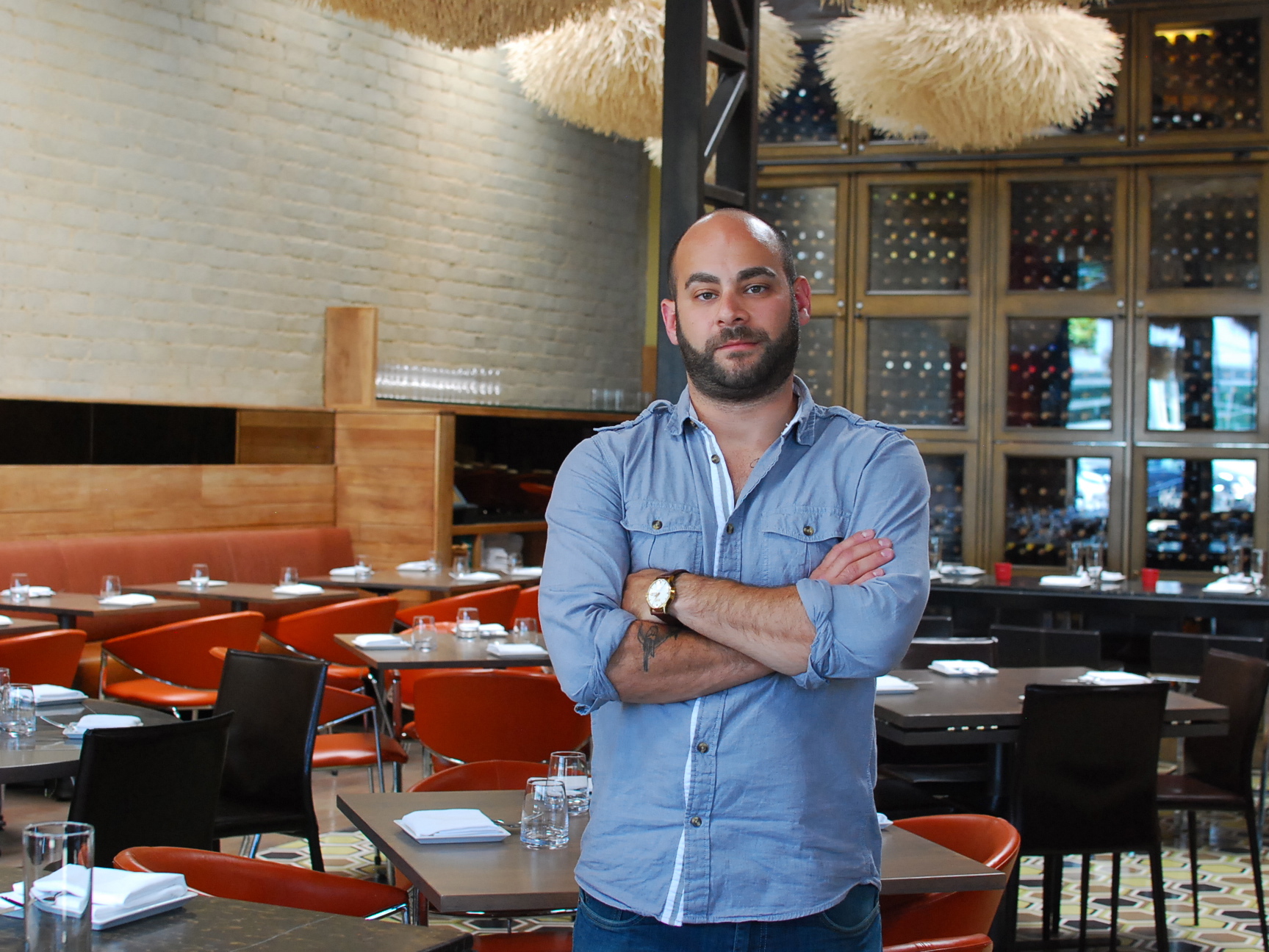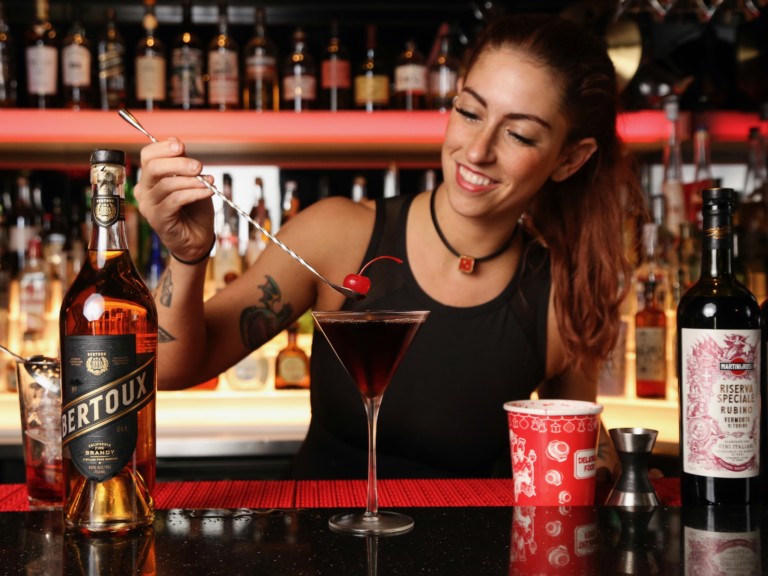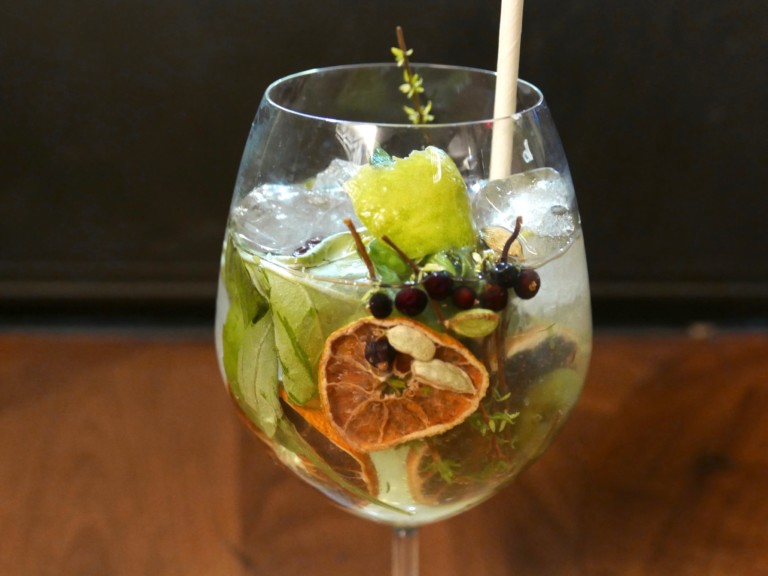INTERVIEW CONTINUED FROM PREVIOUS PAGE
When did you know you’d work with beverage for a living, or for a career?
There’s always those moments in your career. I know I didn’t want to become a cook because the money was better in the front of the house. I love cooking – there’s a lot of cooking technique in my cocktails – but the money just wasn’t there for me. Management is great. It’s been very good to me, but the creativity really isn’t there like cocktails. I was bartending and I was working with this guy that was a little bit older, and to be honest with you, that thought kind of freaked me out, being this older guy that had to work behind the bar, as physically demanding as bartending is, and I always loved wine. I was the de facto wine steward at this restaurant, so I decided to get serious about being a sommelier. I was like, “Well, I could see myself being on the floor at restaurants when I’m older, talking about wine and pouring it tableside, decanting beautiful bottles, but I don’t know about shaking cocktails when I’m in my late ’40s, early ’50s, sort of thing.”
Do you feel like being a sommelier helps you as a bartender?
Absolutely.
In what ways?
It helps you develop the all-important palate. Without a palate, you don’t know what balance is. It means you can’t pull out subtle nuances, and really, when you get down to it, the difference between Scotches, tequilas, whatever families they come from, are subtle nuances, that different distilleries are able to coax out. Those subtle nuances, in wine parlance, are called terroir. It’s that kind of expression of what the wine is, where the wine comes from, how they’re produced, so you get this beautiful sense of this specific place. Liquor does that too, and I think that’s what’s really allowed me to bring my skills as a sommelier into bartending. Some of the chefs I’ve worked with, they’ve had some pretty interesting flavor combinations on their dishes, which make pairing a bit of a challenge, but it’s one of those advanced lessons in wine pairings that kind of help you understand what flavors go with what. So when you’re behind the bar, when you understand the flavors of the spirits and juices or herbs, you just start putting things together that naturally work with each other. Going back to classic cocktail training, knowing ratios that work in cocktails and why they work, and being able to use that family of cocktails, and the different kind of classic recipes, and sub things out for different things, more seasonal fruits, juices, spices, herbs, whatever, without completely ruining everything, making it too sweet, overpowering. There’s a subtlety of balance and weights in the ways things come across your palate.
How do you go about naming your cocktails?
That’s actually what I’m worst at, naming cocktails. I generally let Julian name the cocktails for all the restaurants and the stuff that we’re doing because he’s actually really good at it. He’s really talented at naming cocktails. Let’s put it that way. I just kind of do it straightforward, what it is, unless I have a name that comes to me. I’m not that creative when it comes to naming.
What was the most recent cocktail that you developed, and what was your inspiration?
I could tell you about the thing I did for this private party. It was a Year of the Dragon themed party, so I made everything dragon-esque themed. I did a deconstructed margarita where it was tequila with a drop of lime juice in it, a salt air, and then I did an espuma of Triple Sec, orange juice, yuzu and I smoked matcha powder – green tea powder – with hickory. I folded matcha powder into that mixture and made an espuma out of it, put it in a whipper, shot it into a ladle, put a little lolly stick on the end of it, dropped it into liquid nitrogen, so you had this frozen crust on the outside with this creamy espuma on the inside. You do a shot of the tequila with the salt and get acidic but kind of like a smoky, salty, and then you follow it up with a cool citrus, orange, slightly smoked frozen espuma. And because of the drastic temperature change involved, you have some smoke coming out, and because I smoked that matcha powder with mesquite, it kind of tricks you into actually thinking you’re breathing smoke. That’s one of the things I developed for the Year of the Dragon theme.
When you’re not working, where and what do you like to drink?
I like drinking everything. I guess my first love is Islay Scotches, a big chunk of ice and a beautiful Scotch. But really, when I’m going out, it depends on where I’m at. If it’s a place where I know the bartenders, and I know I’m going to get a beautiful cocktail – there’s a lot of places like that now in L.A., versus when I first moved to L.A. – I kind of leave it up to them, whatever they think I should be drinking, unless I’m craving something. Other than that, it’s beer and a shot, because it’s the safest way to order at bars that you don’t know or aren’t cocktail-centric.
You didn’t say wine.
I didn’t say wine. I do love drinking wine. I do drink wine a lot, but generally when I drink wine, it’s sparkling wine or dry and acidic wines. I drink those kind of as a refresher or as a palate cleanser. I love wine with food. I hardly ever have cocktails with food. When I go out to eat, I’ll start with a cocktail and switch to wine…Wine, sake, beer, I love it all.
If you could only drink one more cocktail, what would you have in that glass?
Whatever Jeremy Lake is making me.
Jeremy Lake: Daiquiri.
I can live with daiquiri.









Leave a Comment